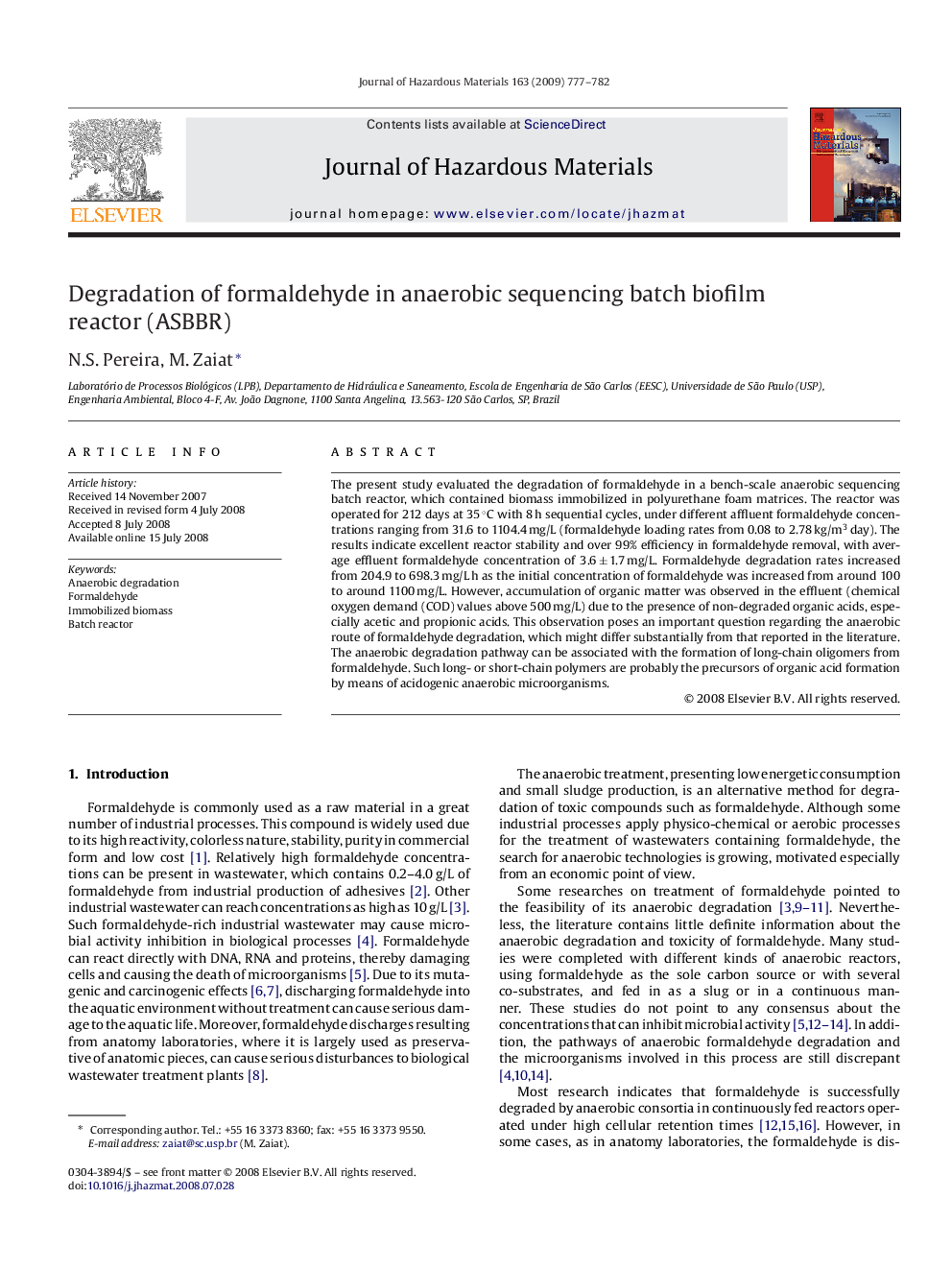| Article ID | Journal | Published Year | Pages | File Type |
|---|---|---|---|---|
| 582122 | Journal of Hazardous Materials | 2009 | 6 Pages |
Abstract
The present study evaluated the degradation of formaldehyde in a bench-scale anaerobic sequencing batch reactor, which contained biomass immobilized in polyurethane foam matrices. The reactor was operated for 212 days at 35 °C with 8 h sequential cycles, under different affluent formaldehyde concentrations ranging from 31.6 to 1104.4 mg/L (formaldehyde loading rates from 0.08 to 2.78 kg/m3 day). The results indicate excellent reactor stability and over 99% efficiency in formaldehyde removal, with average effluent formaldehyde concentration of 3.6 ± 1.7 mg/L. Formaldehyde degradation rates increased from 204.9 to 698.3 mg/L h as the initial concentration of formaldehyde was increased from around 100 to around 1100 mg/L. However, accumulation of organic matter was observed in the effluent (chemical oxygen demand (COD) values above 500 mg/L) due to the presence of non-degraded organic acids, especially acetic and propionic acids. This observation poses an important question regarding the anaerobic route of formaldehyde degradation, which might differ substantially from that reported in the literature. The anaerobic degradation pathway can be associated with the formation of long-chain oligomers from formaldehyde. Such long- or short-chain polymers are probably the precursors of organic acid formation by means of acidogenic anaerobic microorganisms.
Related Topics
Physical Sciences and Engineering
Chemical Engineering
Chemical Health and Safety
Authors
N.S. Pereira, M. Zaiat,
